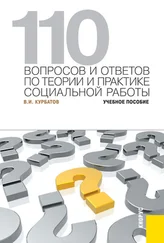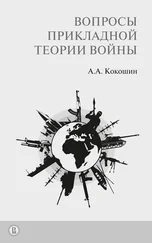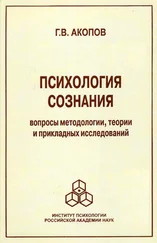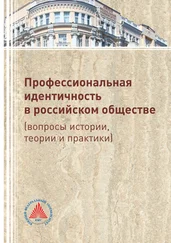57. Hirsh, K.W. & Tree, J . Word association norms for two cohorts of British adults // Journal of Neurolinguistics. – 2001. – Vol. 14(1). – Pp. 1–44.
58. Howard, D.V . Restricted word association norms for adults between the ages of 20 and 80 // JSAS Catalog of Selected Documents in Psychology. – 1980. – Vol. 10. – № 6.
59. Izura, C., Hernάndez-Muňoz, M., & Ellis, A.W . Category norms for 500 Spanish words in five semantic categories // Behavior Research Methods. – 2005. – Vol. 37. – Pp. 385–397. [Электронный ресурс] www.psychonomic.org/archive
60. . Jenkins, J. The 1952 Minnesota word association norms // Postman, L. & Keppel, G . (Eds.). Norms of Word Association. – New York; London:: Academic Press, 1970.
61. Jenkins, J., & Russell, W.A . Systematic changes in word association norms: 1910 – 1952 // Journal of Abnormal and Social Psychology. – 1960. – Vol. 60.
62. Joyce, T . Constructing a large-scale database of Japanese word associations // Glottometrics. – 2005. – Vol. 10. – Pp. 82–98.
63. Kent, G.H, & Rosanoff, A.J . A study of associations in insanity. I. Association in normal subjects // American Journal of Insanity. – 1910. – Vol. 67. – Pp. 37–96; 317–390.
64. Kerr, N.H., & Johnson, T.H . Word norms for blind and sighted subjects: Familiarity, concreteness, meaningfulness, imageability, imagery modality, andword association // Behavior Research Methods, Instruments, & Computers. – 1991. – Vol. 23. – Pp. 461–485.
65. Kiss, G., Armstrong, C., Milroy, R. & Piper, J . The Associative Thesaurus of English. – Edinburgh: University of Edinburgh, MRC Speech and Communication Unit, 1972. – 1539 p.
66. Kurcz, I . Polskie normy powszechności skojarzeń swobodnych na 100 słow z listy Kent-Rosanoffa // Studia psychologiczne. – Warzawa, 1967. – T. VIII (Nadbitka). – 255 s.
67. Lahl, O., Gőritz, A.S., Pietrowsky, R. & Rosenberg, J . Using the World-Wide Web to obtain large-scale word norms: 190,212 ratings on a set of 2,654 German nouns // Behavior Research Methods. – 2009. – Vol. 41 (1). – Pp. 13–19.
68. Lambert, W.E. & Mоогe, N. Word-association responses: Comparisons of American and French monolinguals with Canadian monolinguals and bilinguals // Journal of Personality and Social Psychology, 1966. – Vol. 3. – Pp. 313–320.
69. Magyar verbális asszociáciόk 1 [Hungarian Verbal Associations 1 / Ed. By Ballό, L.]. – Szeged, Budapest, Debrecen: Juhász Gyula Tanárképzõ Fõiskola, 1983. – 210 p.
70. Magyar verbális asszociáciόk 2 [Hungarian Verbal Associations 2 / Ed. By Ujvari, C.]. – Szeged, Budapest, Debrecen: Juhász Gyula Tanárképzõ Fõiskola, 1985. – 204 p.
71. Maršálová, L . Slovno-associačné normy II. V–IX trieda ZDŠ a vysoká škola. – Bratislava: Univerzita Komenského v Bratislave, 1974. – 497 s.
72. Marques, J.F., Fonseca, F.L., Morais, A.S., & Pinto, I.A . Estimated age of acquisition norms for 834 Portuguese nouns and their relation with other psycholinguistic variables // Behavior Research Methods. – 2007. – Vol. 39. – Pp. 439–444.
73. McEvoy, C.l. & Nelson, D.L . Category name and instance norms for 106 categories of various sizes // American Journal of Psychology. – 1982. – Vol. 95. – Pp.581–634.
74. McRae, K., Cree, G., Seidenberg, M., & McNorgan, C . Semantic feature production norms for a large set of living and nonliving things // Behavior Research Methods, Instruments & Computers. – 2005. – Vol. 37(4). – Pp. 547–559.
75. Melinger, A. & Weber, A . Database of noun associations for German (2006) URL: www.coli.unisaarland.de/projects/nag/.
76. Morrison, C.M., Chappell, T.D. & Ellis, A.W . Age of acquisition norms for a large set of object names and their relation to adult estimates and other variables // The Quarterly Journal of Experimental Psychology. – 1997. – Vol. 50A. – Pp. 528–559.
77. Nelson, D.L., McEvoy, C.L., & Schreiber, T.A . The University of South Florida Word Association, Rhyme, and Word Fragment Norms (1998). URL: http://www.usf.edu/FreeAssociation/.
78. Novak, Z . Volnė slovni párovėasociace v češtine. – Praha, 1988.
79. Paivio, A., Yuille, J.C. & Madigan, S . Concreteness, imagery, and meaningfulness values for 925 nouns // Journal of Experimental Psychology Monograph Supplement. – 1968. – Vol. 70. – № 1, Pt. 2. – Pp. 1–25.
80. Pérez, M.A., & Navalόn, C . Objective-AoA norms for 175 names in Spanish: Relationship with other psycholinguistic variables, estimated AoA, and data from other languages // Cognitive Psychology. – 2005. – Vol. 17. – Pp. 179–206.
81. Postman, L. & Keppel, G . (Eds.). Norms of Word Association. – New York; London: Academic Press, 1970. – 466 p.
82. Rosenberg, S . Noun responses to adjectives from the Rosenberg-Carter norms under conditions of controlled association. – Nashwille, Tennessee: Peabody College for Teachers, 1965.
83. Rosenberg, S., & Carter, J . Controlled adjective responses to 53 nouns from Kent-Rosanoff association test. – Nashwille, Tennessee: Peabody College for Teachers, 1965.
84. Rosenzweig, M.R . Ėtudes sur I’association des mots // L’Annėe Psychologique. – 1957. – Vol. 57. – Pp. 23–32.
85. Rosenzweig, M.R . Word associations of French workmen: Comparisons with associations of French students and American workmen and students // Journal of Verbal Learning and Verbal Behavior. – 1964. – Vol. 3. – Pp. 57–69.
86. Rosenzweig, M.R. International Kent-Rosanoff word association norms, emphasizing those of French male and female students and French workmen // Postman, L. & Keppel, G . (Eds.). Norms of Word Association. – New York; London:: Academic Press, 1970.
87. Russell, W.A . The complete German language norms for responses to 100 words from the Kent–Rosanoff word association test // Postman, L. & Keppel, G . (Eds.). Norms of Word Association. – New York; London: Academic Press, 1970. – Pp. 53–94.
88. Russell, W.A. & Jenkins, J.J . The complete Minnesota norms for responses to 100 words from the Kent–Rosanoff word association test: Technical Report No.11. – University of Minnesota, 1954.
89. Russell, W.A. & Meseck, O . Der Einfluss der Assoziation auf das Erinnern von Worten in der deutschen, franzõsischen und englischen Sprache // Zeitschrift für Expereimentelle und Angewandte Psychologie. – 1959. – Vol. 6. – Pp. 191–211.
90. Ruts, W., De Deyne, S., Ameel, E., Vanpaemel, W., Ver beemen, T. & Storms, G . Dutch norm data for 13 semantic categories and 338 exemplars // Behavior Research Methods, Instruments & Computers. – 2004. – Vol. 36. – Pp. 506–515.
91. Schulte im Walde, S., Melinger, A., Roth, M., & Weber, A . An empirical characterization of response types in German Association Norms // Research on Language and Computation. – 2008. – Pp.1–38.
92. Snodgrass, J.G., & Vanderwart, M . A Standardized Set of 200 Pictures: Norms for Name Agreement, Image Agreement, Familiarity, and Visual Complexity // Journal of Experimental Psychology: Human Learning and Memory. – 1980. – Vol.6. – Pp. 174–215.
93. Stadthagen-Gonzales, H. & Davis, C.J . The Bristol Norms for Age of Acquisition, Imageability, and Familiarity // Behavior Research Methods. – 2006. – Vol. 38. – Pp. 598–605 [Электронный ресурс].
94. Stamou, S. et al . BalkanNet: A Multilingual Semantic Network for the Balkan Languages // Proceedings of the 1 stInternational Global WordNet Conference (January 21–25, 2002). – Mysore, India, 2002. – Pp. 12–14. http://www.ceid. upatras.gr/Balkanet/
Читать дальше
Конец ознакомительного отрывка
Купить книгу









